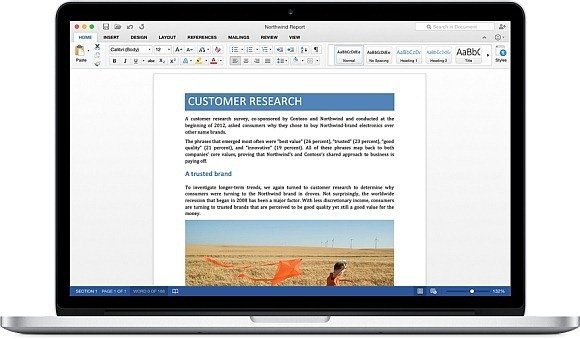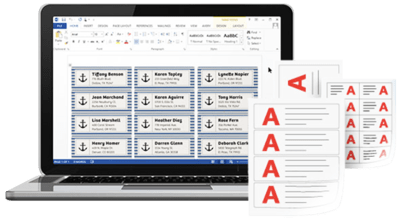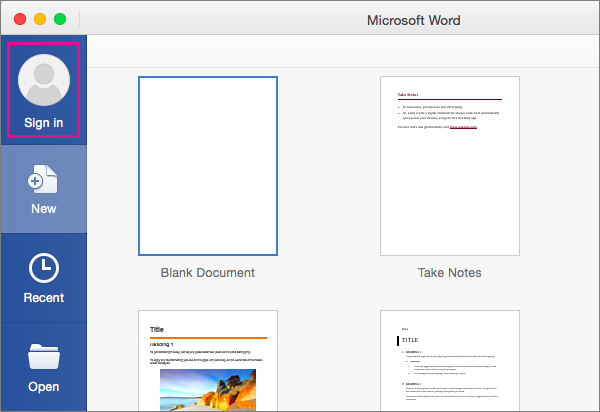-->
- Office 2016 Mac Template Locations
- Buy Office 2016 For Mac
- Office 2016 Mac Os
- Office 2016 Mac
- Microsoft Office 2016 Mac Download
Note
- Open the POTX template you want to set as the default Click File / Save As Click the file type drop down and select PowerPoint Template (.potx). This will automatically change the folder location to your personal templates folder.
- Let’s now look at how you can use office 2016 deployment tool to customize your office 2016 installation. Download and install Office 2016 deployment tool. As a first step, download the office 2016 deployment tool from Microsoft’s Download Center. Next, extract the contents, and you’ll see two files — an executable file called “setup.
- According to this page, and confirmed by experiment, the path has changed for Office 2016.It is now /Library/Group Containers/UBF8T346G9.Office/User Content/Templates. (This is what you see in the Finder: if you use Terminal the last two directories have '.localized' appended to their name, which Finder evidently suppresses).
- You can download the Office 2016 (or 2013 if thats what you're using) admin template files here: Import them into GPO and then create a policy and change the 'Workgroup Templates Path' to your shared drive location under User Configuration Policies Administrative Templates Microsoft Office 2016 Shared Paths.
Office 365 ProPlus is being renamed to Microsoft 365 Apps for enterprise. For more information about this change, read this blog post.
Symptoms


According to this page, and confirmed by experiment, the path has changed for Office 2016. It is now /Library/Group Containers/UBF8T346G9.Office/User Content/Templates. (This is what you see in the Finder: if you use Terminal the last two directories have '.localized' appended to their name, which Finder evidently suppresses).

By default, installations of Microsoft Office are configured to automatically update your Office installation when new updates are made publicly available. However, if you examine the Account section of the backstage, you may see that updates are disabled or that the command to manage updates is disabled or hidden. For example, the following figure indicates that updates are disabled in the backstage.
Office 2016 Mac Template Locations

Cause
This issue occurs if updates have been manually disable or are managed through Group Policy settings.
Resolution
We recommend that you keep automatic updating enabled for Office installations because this configuration allows Office to automatically update with the latest fixes and security features. To re-enable automatic updates for Office, follow the steps below.
Manually configure automatic updates
If your Office installation is not managed by Group Policy, you can manually re-enable automatic updates by following these steps. If you cannot follow these steps because the Update Options control is disabled or missing, your updates are being managed by Group Policy.
- Start any program.
- On the File tab, select Account.
Note: In Outlook, select Office Account. - On the right side, select Update Options, and then select Enable Updates.
- If you are asked whether you want to let Microsoft Office make changes to your computer, select Yes.
Automatic updates managed by Group Policy
Warning
Follow the steps in this section carefully. Serious problems might occur if you modify the registry incorrectly. Before you modify it, back up the registry for restoration in case problems occur.
If you cannot follow the steps in the 'Manually configure automatic updates' section, this is because the Update Options control is disabled or missing due to a Group Policy. For example, the following figure shows the Update Options control when the Enable Updates option is hidden through a Group Policy:
To examine the registry data that is associated with the Group Policy settings which control this feature, follow these steps:
- Start Registry Editor. To do this, take one of the following actions:
- In Windows 10 or Windows 8, press the Windows key + X, select Run, type regedit in the Open box, and then press Enter.
- In Windows 7 and Windows Vista, select Start, type regedit in the Start Search box, and then press Enter. If you are prompted for an administrator password or for confirmation, type the password, or select Allow.
- Locate and then select the following registry key:
Note: If this key does not exist in your Registry Editor, see How to add the registry key via policy below.
Microsoft 365 Apps for enterprise, Office 2019, and Office 2016
HKEY_LOCAL_MACHINEsoftwarepoliciesmicrosoftoffice16.0commonOfficeUpdate
Office 2013
HKEY_LOCAL_MACHINEsoftwareWow6432Nodemicrosoftoffice15.0commonOfficeUpdate
- Examine the following registry values under the OfficeUpdate key:
- DWORD: EnableAutomaticUpdates
Values:
0 = automatic updates are disabled
1 = automatic updates are enabled - DWORD: HideEnableDisableUpdates
Values:
1 = hide the menu option to enable or disable automatic updates
0 = show the menu option to enable or disable automatic updates
- If you have any questions or concerns about these policy settings, see your domain administrator.

How to add the registry key via policy
The registry key is added automatically when you install ADMX/ADML files. To do this:
Microsoft 365 Apps for enterprise, Office 2019, and Office 2016
Buy Office 2016 For Mac
- Always download the LATEST admin templates to a location of your choice:Administrative Template files (ADMX/ADML) and Office Customization Tool for Microsoft 365 Apps for enterprise, Office 2019, and Office 2016
- Select the Download button.
- Select either the x64 or the x86 build.
- Select Run and follow the prompts to install the software.
- Copy the *.admx files into the C:/Windows/PolicyDefinitions/ folder.
- Copy the *.adml files from the language-locale subfolder (for instance, 'en-US') into the respective language-locale folder under C:/Windows/PolicyDefinitions/.
Warning
Be sure to preserve the same language-locale PolicyDefinitions folder which is applicable to your environment.
Office 2016 Mac Os
Office 2013
- Go to the Office 2013 Administrative Template files (ADMX/ADML) and Office Customization Tool page.
- Select the Download button.
- Select either the x64 or the x86 build.
- Select Run and follow the prompts to install the software.
- Copy the *.admx files into the C:/Windows/PolicyDefinitions/ folder.
- Copy the *.adml files from the language-locale subfolder (for instance, 'en-US') into the respective language-locale folder under C:/Windows/PolicyDefinitions/.
Warning
Be sure to preserve the same language-locale PolicyDefinitions folder which is applicable to your environment.
After you copy the Administrative Template files to AD DS, you'll find the update policy settings under Computer Configuration > Policies > Administrative Templates > Microsoft Office 2016 (Machine) > Updates in the Group Policy Management Console. You'll also find a description of how to configure each policy setting.
Office 2016 Mac
More information
Microsoft Office 2016 Mac Download
For more information about configuring the update settings via GPO, see Configure update settings for Microsoft 365 Apps for enterprise.